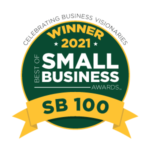Is your child having trouble regulating at home or in school? Are transitions hard? We have some helpful tips and tricks to share.
Understanding the behavior
Let’s be real – no parent wants notes sent home from school, child care calling you to come to pick up your child, or a family day filled with tears and problem behaviors. We have parents ask, “What can we do?” and our answer is usually a question, “What is the reason for the child’s behavior?”. A child’s behavior is expressing a need. These needs or functions fall under one or more of the four functions of behavior.
- Access to attention
- Avoidance/escape from something undesirable or too difficult.
- Access to tangibles (i.e food, toys, parents, etc.)
- Sensory Stimulation (i.e. sensory needs such as light, sound, touch, taste, etc.)
Knowing the reason of the behavior allows you to prevent it from escalating. A power struggle with your child never ends positively. We encourage being proactive by identifying the reason of the behavior and using one of the tools/ strategies below to help your child stay in the world of regulation. One of the largest things you can do to be proactive is to reinforce your child for what it is they are doing that you like. As parents, we oftentimes get into the habit of telling our kids what to not do or say, and changing our language and actions is an important first step. We will teach the child what it is we want them to say and or to do through our words and actions. An example would be telling a child to show me “walking feet” instead of telling them “stop running”. Further, modeling ways to regulate when we are overexcited, nervous, or sad can help. Be a narrator to your life and express and acknowledge your own state of regulation. Below you will find a list of tools and strategies that support positive behavior management.
Tools
- Visual schedule
- Visual Timer (search free visual timer in app store)
- Solid Reinforcement schedules (token system, star chart, first/then, etc..)
- Wiggle seats/chairs
- Bouncy bands for desks
- Sensory bins (beans, rice, orbeez, etc..)
- Safety toy (a pocket-sized object to carry with you for consistency during transitions)
- Pencil grips, thicker pencil/markers/crayons
- Headphones
- Whiteboards or typing instead of pencil/paper
- Sensory toys:
- Pop its
- Sensory tape/velcro for desks
- Busy fingers
Strategies
- 3, 2, 1 – MY TURN – to help with transitions
- Providing choices – “Time to leave. Do you want to take big steps or walk slow?”
- Physical reinforcements (high fives, fist bumps, hugs, tickles etc..)
- “Free choice”/Breaks (not time out but a place to go and not have any demands placed)
- Emotional Regulation
- Label feelings and okay them – all feelings are valid
- Children are “brand new humans” and don’t know expectations or the labels


